Why did it happen?
If you’re over 50 and fractured your hip, it’s most likely because your bones aren’t strong. This may be due to “thinning bones”, also called osteoporosis.
What types of hip fractures are there?
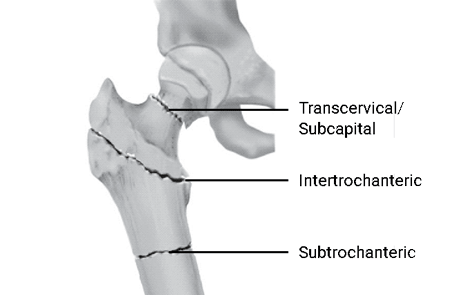
The hip can break 3 ways:
- across the neck of the bone(transcervical/subcapital)
- below the neck of the bone (intertrochanteric)
- across the shaft of the bone (subtrochanteric)
How are hip fractures fixed?
It depends on the type of hip fracture. Your hip x-rays will help the surgeon decide what type of hip fracture you have and what type of repair you need.
Here are some of the ways to fix a hip fracture.
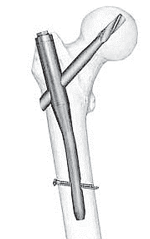
Intramedullary (Gamma®) Nail |
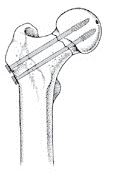
Cannulated Screws |
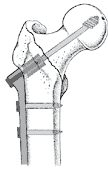
Sliding/ Dynamic® Hip Screws |
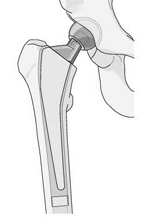
Partial Hip Replacement
(Hemiarthroplasty) |
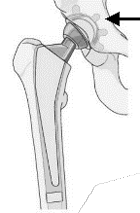
Total Hip Replacement
(Total Hip Arthroplasty)
(Notice the extra piece) |
Pictures courtesy of AO Principles of Fracture Management, Copyright AO Publishing. www.aofoundation.org (retrieved December 2017)
To fix your hip fracture, your surgeon will use a hip implant (or hardware). These implants are made of metal, plastic, or ceramic. The implant your surgeon chooses will depend on things like your age and how strong your bone is.
Your surgeon will talk to you about the repair you need. If you have questions, please ask your surgeon or nurse. If you can, have someone with you to help you remember what’s said. If you’re alone when the surgeon talks with you and you want someone included, please ask your surgeon to call them.
